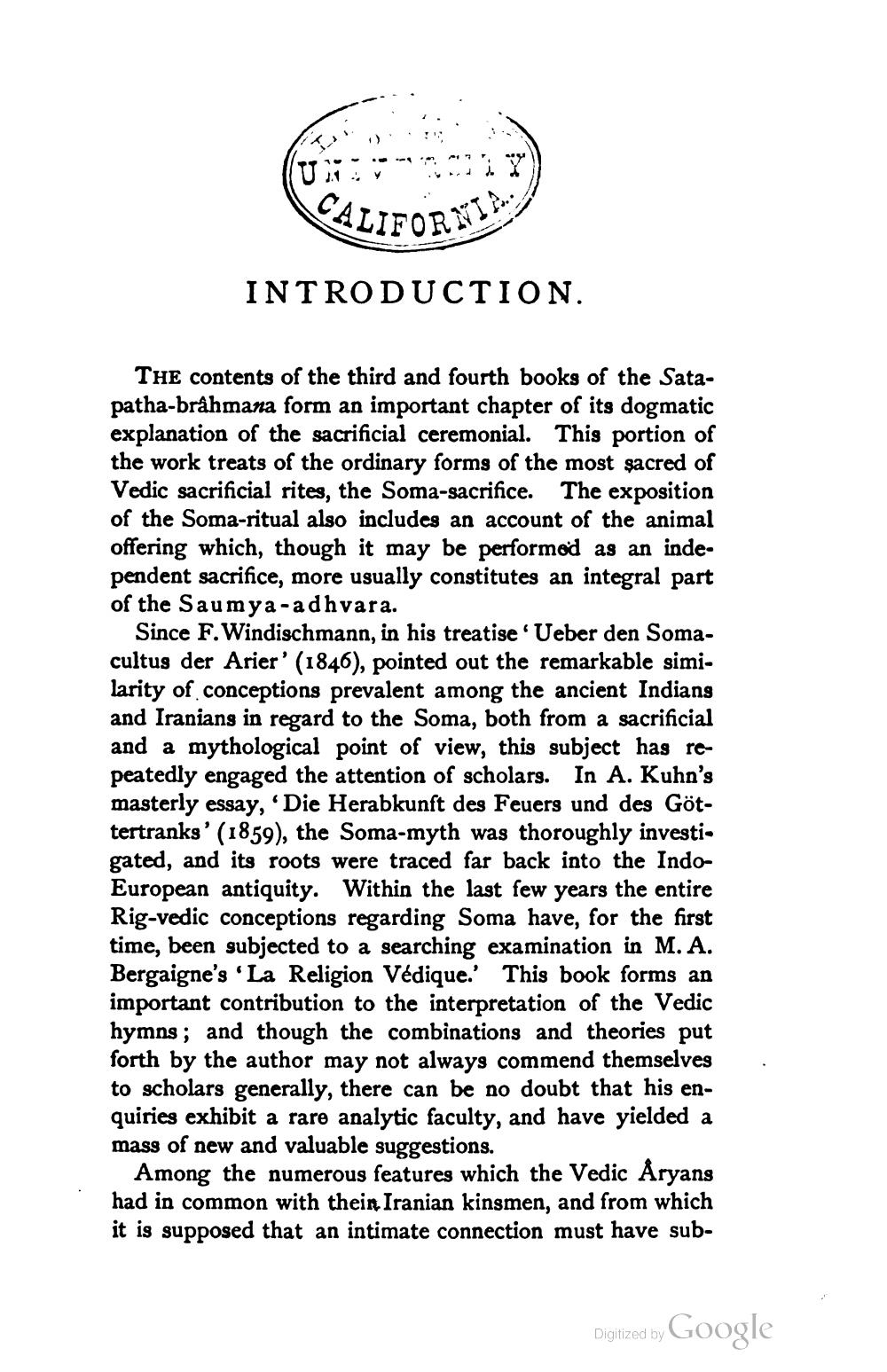________________
UuY
CALIFOR IDEAS
INTRODUCTION.
THE contents of the third and fourth books of the Satapatha-brâhmana form an important chapter of its dogmatic explanation of the sacrificial ceremonial. This portion of the work treats of the ordinary forms of the most sacred of Vedic sacrificial rites, the Soma-sacrifice. The exposition of the Soma-ritual also includes an account of the animal offering which, though it may be performod as an independent sacrifice, more usually constitutes an integral part of the Saumya-adhvara.
Since F. Windischmann, in his treatise Ueber den Somacultus der Arier' (1846), pointed out the remarkable similarity of conceptions prevalent among the ancient Indians and Iranians in regard to the Soma, both from a sacrificial and a mythological point of view, this subject has repeatedly engaged the attention of scholars. In A. Kuhn's masterly essay, 'Die Herabkunft des Feuers und des Göttertranks' (1859), the Soma-myth was thoroughly investie gated, and its roots were traced far back into the IndoEuropean antiquity. Within the last few years the entire Rig-vedic conceptions regarding Soma have, for the first time, been subjected to a searching examination in M. A. Bergaigne's 'La Religion Védique.' This book forms an important contribution to the interpretation of the Vedic hymns; and though the combinations and theories put forth by the author may not always commend themselves to scholars generally, there can be no doubt that his enquiries exhibit a rare analytic faculty, and have yielded a mass of new and valuable suggestions.
Among the numerous features which the Vedic Aryans had in common with thein Iranian kinsmen, and from which it is supposed that an intimate connection must have sub
Digitized by Google




